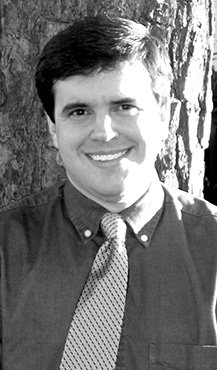The 1880s and 1890s saw the rise of some of the most notorious criminals in American History, mostly riding the dusty trails of the West. One of the most infamous was the Dalton Gang, made up of outlaws from Kansas, Oklahoma and Arkansas.
The Dalton Gang, a notorious group made up of a group of Kansas brothers and an Arkansas drifter, terrorized the frontier with a string of murders and robberies stretching across the Lower Great Plains.
The Dalton Gang was led by three brothers from Kansas. Their parents, Lewis Dalton and Adeline Younger, aunt to the outlaws Cole and Jim Younger, had fifteen children together. They settled in Coffeyville in southeastern Kansas and were otherwise honest citizens. Ironically, the eldest Dalton brother, Frank Dalton, had been a respected Deputy U. S. Marshal before his own death in the line of duty in 1887. Three brothers, Grat, Emmett and Bob had worked with posses their brother had organized and briefly continued to work as deputies afterward.
Along the way, they turned away from the law and into a whirlwind of crime and destruction. By 1891, the three had formed the Dalton Gang, bringing in a number of characters from across Oklahoma. One, Bill Doolin, was born in rural Johnson County in Western Arkansas in 1858, the son of destitute sharecroppers. He moved to what was at that time the Indian Territory (modern-day Oklahoma) in 1881 as a ranch hand, but he drifted for several years afterward and had a number of brushes with the law.
After months of robberies and shootings up and down the frontier, the Dalton Brothers returned to Coffeyville in October 1892 to rob two banks. The daring plan collapsed, and four residents and four gang members were killed, including Grat and Bob Dalton. Emmett Dalton was captured and served fifteen years in a Kansas prison before being paroled. He later moved to California, wrote a book about his experiences, and eventually became a real estate agent before his death in 1937.
Doolin decided not to participate in the Coffeyville Raid, a decision that saved his life – for the time being. However, he and a fourth brother, Bill Dalton, proceeded to build a new gang in Oklahoma that came to be called the Oklahoma Long Riders, or simply, the Wild Bunch. They staged train robberies and bank robberies from Missouri to Texas. In September 1893, a posse of fourteen lawmen cornered the Wild Bunch in Ingalls, Oklahoma. A shootout erupted, leaving four dead and the Wild Bunch scattered.
After the raid, Bill Dalton rode south, and he and four men robbed a bank in Longview, Texas, in 1894. After the robbery, he and his gang rode back north toward the relative anonymity of the Oklahoma Territory, but he was shot and killed by U.S. Marshals in Ardmore two weeks later.
Doolin continued his string of armed robberies. In January 1896, he was captured in a bathhouse in Eureka Springs, Arkansas. He had come to the Northwest Arkansas community in hopes that the mineral baths would help the injuries from his gunfights and flights from the law. However, he escaped from a prison in the Oklahoma Territory six months later. Doolin hid out on his father-in-law’s farm in Oklahoma for several weeks afterward until U. S. Marshals were tipped off to his location. In August 1896, twelve U. S. Marshals had surrounded the farmhouse and prepared to arrest him. Spying the officers, Doolin quickly reached for his gun but was shot dead on the spot.
All the remaining outlaws were captured or killed. With the death of Doolin, the last of the bloodshed and robberies came to an end. And with that, a chapter in the history of the Old West closed.
Dr. Ken Bridges is a professor of history and geography at South Arkansas Community College in El Dorado and a resident historian for the South Arkansas Historical Preservation Society. Bridges can be reached by email at kbridges@ southark.edu.
